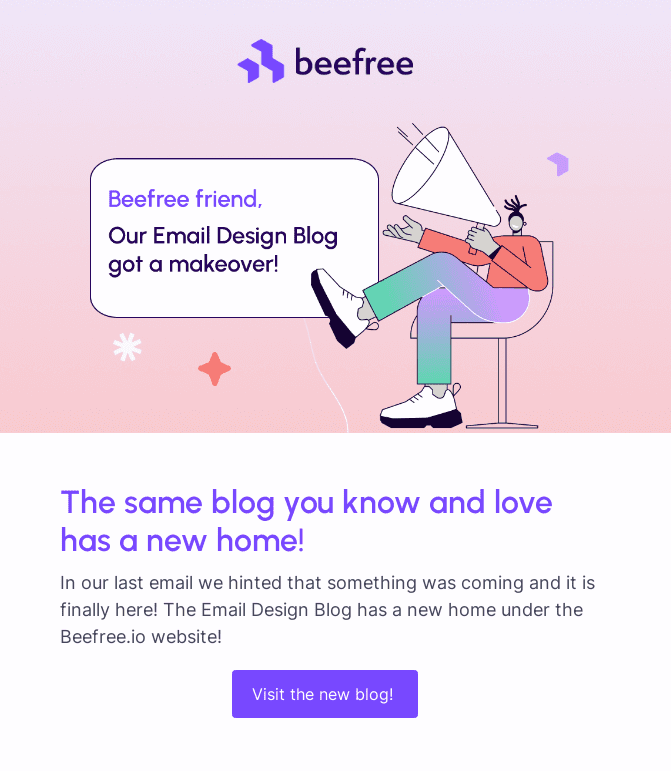
Those who know how to manage an email list often liken it to trimming an overgrown garden. Corporate email lists will quickly grow to unwieldy sizes if they’re not given the proper attention, much like weeds. As daunting (and risky!) as it might seem, cleaning up an email list is more than worth the effort. An optimized email list can improve deliverability, conversion rates, and more. Use this Coalition Technologies guide to get your email list in shape.
Table of Contents
What Do We Mean By ‘Cleaning’ an Email List?
Cleaning an email list, also known as scrubbing, is verifying the email addresses on your mailing list to ensure they are accurate and active. Managing an email list involves segmentation to identify invalid, outdated, or duplicate email addresses, as well as those that have unsubscribed or marked your emails as spam.
The point of cleaning an email list is to improve the efficiency of email marketing campaigns by increasing deliverability rates, reducing bounce rates, and maintaining a healthy reputation.
For example, imagine you have an email list with 10,000 subscribers. After cleaning the list, you find that 1,500 email addresses are inactive or invalid. By removing these from your list, you save on the costs of sending emails to inactive addresses and increase your engagement rates since your emails will now reach readers likely to engage with your brand.
Email List Management and Conversions
Managing an email list can impact conversion rates by ensuring your emails reach the proper recipients. Using an outdated email database for a marketing campaign is like sending letters to vacant houses and expecting a response – there’s no natural way it works.
A clean email list means that every email sent has a higher chance of being opened, read, and acted upon rather than lost in a sea of inactive or uninterested parties. This approach also allows brands to accurately measure reader engagement and interest accurately, making future marketing campaigns even more successful.
The Dark Side of Email List Clean-Ups
Failing to manage an email list doesn’t just lead to ineffective marketing campaigns; it can actively harm your brand.
It’s only a matter of time before your emails start getting flagged as spam if you keep sending your communications to uninterested parties. Flagged senders run the risk of being blacklisted, which means even your interested readers will eventually stop receiving emails.
How does that happen?
In a nutshell, every sender has a particular reputation associated with them. As more recipients mark your emails as spam, that reputation goes down over time. Getting too many spam complaints will cause email providers to direct your communications to spam folders automatically.
How To Manage an Email List
The right approach can help you quickly manage email lists, even if you’ve never done it before. Use these email best practices to start on the right foot.
Master The Art of Segmentation
Every successful email campaign hinges on the sender’s ability to segment their email lists intelligently. Proper email segmentation helps you:
- Build Relevance: Mailchimp reports that segmented email campaigns boast a 14.31% higher open rate than their non-segmented counterparts. This massive difference is partly because segmentation allows businesses to deliver more relevant content to readers.
For example, you can use segmentation to manage email lists by removing subscribers who haven’t opened an email in the last four months. This approach allows you to focus on your more active subscribers. Remember that you’ll still want to occasionally reach out to inactive readers, such as during a sale, to draw them back with unique offers. - Customization: When you clean up your email list and segment your subscribers, you can send more relevant and personalized content to your subscribers, which can help improve email deliverability. Sending the same generic email to your entire subscriber list will increase your chances of being marked as spam.

For example, a sender who knows how to manage an email list can use segmentation to target different audiences in the same campaign. You can offer existing customers unique coupons specific to items they’ve been interested in while reaching out to new audiences with more general messaging.
- Better ROI: Managing an email list with segmentation can help take the trial-and-error element out of your marketing campaigns. Focusing on your more active subscribers is a great way to extract more value from your marketing budget and improve your ROI since you won’t be paying extra to email inactive readers.
Welcome and Engage Your Subscribers
Welcoming subscribers is essential to maintaining a healthy email list, allowing your brand to make a memorable first impression. When you welcome new subscribers, you can set expectations for the type and frequency of emails they receive. You can also allow them to update their preferences or unsubscribe if they are no longer interested in your content.

As you learn how to manage an email list, you’ll discover that being upfront and transparent with your initial communication can help avoid sending emails to uninterested or inactive subscribers. This clarity can ultimately improve email deliverability and reduce the risk of spam complaints.
Creating an engaged audience is an essential part of managing email lists. These active subscribers are a vital data point that can help managers identify the more inactive subscribers. If you fail to engage your readers with your first emails, you won’t be able to collect enough data to determine what works and what doesn’t.
How Do I Make The First Email Count?
If you are an online retailer, you can send a welcome email to new subscribers with a discount code or another incentive to make their first purchase. In the welcome email, you can also provide information about your products and brand values and encourage subscribers to update their email preferences, making email lists easier.
Consider sending a series of welcome emails instead of just one. According to Forbes, sending three welcome emails can lead to up to 90% more orders as they help brands maintain their presence in inboxes despite competition from other senders. If you’re unsure how to manage an email list, note that there is a fine line between being persistent and spammy here.
Use The Data!
While we’re on the topic of data points, let’s discuss insights. Even modest email marketing campaigns can generate many insights to help clean up email lists.
- Analyze Customer Habits: Analyze historical customer data to understand what your subscribers want. For example, analyzing customer habits can help manage email lists by showing you the content you should focus on. If a segment of subscribers has responded well to a specific email layout in the past, you can bring that back.
- Reach Out: Third-party data isn’t always available for analysis, but that doesn’t mean you don’t have options. Reaching out to your subscribers can be surprisingly effective for gathering data on the content they want in your emails.
Re-Engage
If a subscriber hasn’t engaged with your emails in a while, it could be worth trying a re-engagement campaign before removing them from the list. Also known as sunset campaigns, these emails can make managing email lists easier by turning up to 10% of inactive subscribers into potential customers.

You don’t need to know how to manage an email list to succeed here expertly. Sunset campaigns are usually simple affairs where brands reveal lucrative offers or highlight exciting new products that the inactive subscriber might have missed out on. If the recipient still doesn’t open those emails, it’s time to remove them from the list.
Create Consistent Value
Turning an engaged reader into an inactive subscriber doesn’t take much. Managing email lists with spammy or irrelevant campaigns is nearly impossible. Give your readers a reason to open those emails with high-quality content that actively improves their lives, whether through a smile or a discount code.
Don’t Delete, Suppress
Cleaning up email lists doesn’t mean deleting your inactive subscriber base. Even inactive email addresses are valuable for businesses, as they are associated with previous orders and communications. If an inactive subscriber decides to re-engage in the future, you’ll want that data on hand to drive smoother conversions. This is why we’d advise suppressing over deleting when managing email lists.
Suppressing a customer in your list means you no longer have to contact them with your campaigns, but you can keep their data for future use. Marketers who need to learn how to manage email lists will often make the mistake of deleting inactive customer profiles entirely and miss out on future re-engagement opportunities.
Get Cleaning!
The best time to start building a cleaner email list is now. Be clever with your segmentation, exercise your best judgment on which profiles to suppress, and be authentic with your messaging to impact your marketing campaigns significantly.
If you need help managing email lists or building powerful email marketing campaigns, contact Coalition Technologies to speak to an expert today! Our industry-leading campaigns have generated millions in revenue for growing businesses, and we’d love to show you how.

